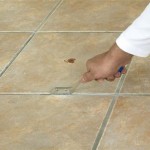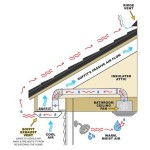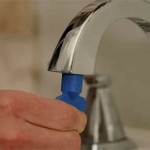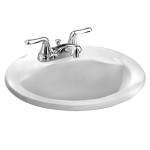Vessel Bathroom Sinks: Exploring the Advantages and Disadvantages
Vessel bathroom sinks, also known as above-counter sinks, have become increasingly popular in modern bathroom designs. These sinks sit directly on top of the countertop, rather than being recessed within it, creating a visually striking focal point. While their aesthetic appeal is undeniable, there are several factors to consider before opting for a vessel sink in a bathroom renovation or new construction project. This article will explore the various pros and cons of vessel bathroom sinks, providing a comprehensive overview to aid in informed decision-making.
Enhanced Aesthetic Appeal and Design Flexibility
One of the primary reasons for the popularity of vessel sinks is their distinctive appearance. They offer a unique design element that can elevate the overall aesthetic of a bathroom. The exposed basin becomes a focal point, adding a touch of elegance and sophistication that is often difficult to achieve with traditional sink styles. The wide variety of shapes, sizes, materials, and colors available allows for greater design flexibility and customization.
Vessel sinks are available in a range of materials, including ceramic, glass, stone, metal, and even concrete. This allows designers to select a material that complements the existing bathroom decor and reflects the desired style. For instance, a glass vessel sink can bring a modern, airy feel to a space, while a stone sink can add a touch of rustic charm. Metal vessel sinks, particularly those in copper or bronze, can introduce a luxurious and antique aesthetic. The diverse material options contribute significantly to the design possibilities.
Furthermore, vessel sinks come in various shapes, from classic round and oval designs to more contemporary square and rectangular models. Irregular shapes and unique designs are also available, providing opportunities for creative expression. The size of the vessel sink can also be tailored to the bathroom space, with smaller sinks suitable for compact bathrooms and larger sinks making a bold statement in larger bathrooms. This adaptability in size and shape makes vessel sinks a versatile choice for a wide range of bathroom designs.
Installation of a vessel sink often allows for the display of the countertop material more visibly. Because the sink sits on top instead of inside the counter space, a larger expanse of the countertop is left uncovered, thereby allowing for the beautiful stone or hardwood counter to be more pronounced to the overall design.
Installation Considerations and Potential Challenges
While the installation of a vessel sink might appear straightforward, there are several considerations that need to be taken into account. Unlike undermount or drop-in sinks, vessel sinks require careful attention to countertop height and faucet selection. Incorrect planning can lead to discomfort and functional issues.
Countertop height is a critical factor. Since the vessel sink sits on top of the countertop, the overall height from the floor to the top of the sink basin must be comfortable for users. If the countertop is too high, it can be difficult for shorter individuals, particularly children, to use the sink comfortably. Conversely, if the countertop is too low, it can result in back strain and an awkward posture. The ideal countertop height for use with a vessel sink is typically lower than that of a standard sink installation. This is because the height of the sink basin itself adds to the overall height. Calculating the combined height of the countertop and sink is crucial for ensuring ergonomic comfort.
Faucet selection is another important consideration. Standard faucets designed for traditional sinks might not be suitable for vessel sinks. Taller faucets or wall-mounted faucets are often necessary to reach over the rim of the vessel sink and provide adequate water flow into the basin. The reach and height of the faucet spout must be carefully considered to prevent splashing and ensure ease of use. Matching the faucet finish to the vessel sink material and overall bathroom decor is also essential for a cohesive aesthetic.
Plumbing modifications may be required depending on the existing bathroom setup. The drainpipe may need to be adjusted to accommodate the vessel sink's drain location. In some cases, the water supply lines may also need to be extended or rerouted to connect to the faucet. Engaging a qualified plumber is recommended to ensure that the plumbing is properly installed and meets local building codes. Ignoring these plumbing considerations can lead to leaks, drainage issues, and potential water damage.
In addition, the countertop needs to be properly prepared with the correct sized hole for the drain assembly. Some vessel sinks require additional support or specialized mounting rings to stay securely in place. Ensure that proper sealant is used when installing the sink to prevent water from seeping underneath it and damaging the countertop.
Maintenance and Cleaning Requirements
Maintaining the cleanliness and appearance of a vessel sink requires regular attention. The exposed nature of these sinks makes them more susceptible to water spots, soap scum, and grime buildup compared to undermount or integrated sinks. The specific cleaning requirements and methods depend on the material of the vessel sink.
Ceramic vessel sinks are generally easy to clean and maintain. They are resistant to stains and scratches and can be cleaned with common household cleaners. However, abrasive cleaners should be avoided as they can damage the surface finish. Regular wiping with a damp cloth and mild soap is usually sufficient to keep ceramic vessel sinks looking their best. Ensuring that the sink is dried after each use can help prevent water spots and mineral deposits from forming.
Glass vessel sinks require more frequent cleaning to maintain their transparency and shine. Water spots and soap scum are more visible on glass surfaces, so regular cleaning is essential. Gentle glass cleaners and microfiber cloths are recommended to avoid scratching the glass. Avoid harsh chemicals or abrasive cleaners, as they can damage the glass and leave streaks. Polishing the glass surface regularly can help maintain its luster.
Stone vessel sinks, such as those made from granite or marble, require special care to prevent staining and damage. These materials are porous and can absorb liquids, so sealing them is crucial. A sealant should be applied regularly to protect the stone from water and other substances. Avoid using acidic or alkaline cleaners, as they can etch or discolor the stone. Neutral pH cleaners specifically designed for stone surfaces are recommended. Wiping up spills immediately is essential to prevent staining.
Metal vessel sinks, such as copper or stainless steel, require specific cleaning methods to prevent tarnishing and maintain their shine. Copper sinks can develop a patina over time, which some people find aesthetically pleasing. However, if a bright, shiny finish is desired, copper-specific cleaners and polishes can be used. Stainless steel sinks can be cleaned with stainless steel cleaners and a soft cloth. Avoid using abrasive cleaners or steel wool, as they can scratch the surface.
Regardless of the material, it is important to clean the area around the base of the vessel sink regularly to prevent grime and mold buildup. This area can be prone to moisture accumulation, so proper ventilation and regular cleaning are essential.
Space Efficiency and Countertop Usage
The impact of a vessel sink on space efficiency and countertop usage is another factor to consider. While vessel sinks can add visual interest and a sense of spaciousness to a bathroom, they can also reduce the available countertop space and potentially impact storage options.
Since vessel sinks sit on top of the countertop, they occupy a portion of the usable surface area. This can be a significant consideration in smaller bathrooms where countertop space is limited. In such spaces, an undermount or integrated sink might be a more practical choice to maximize the available workspace. However, in larger bathrooms, the impact on countertop space might be less of a concern.
The choice of faucet placement can also affect countertop usage. Wall-mounted faucets can free up countertop space, but they require additional plumbing work and careful planning. Deck-mounted faucets, on the other hand, can take up valuable space around the vessel sink. Balancing the aesthetic appeal of the faucet with its impact on countertop space is important.
The space beneath the countertop can also be affected by the installation of a vessel sink. The plumbing for the sink and faucet may require adjustments to the cabinet space below, potentially reducing storage capacity. It is important to consider how the plumbing will affect the available storage and plan accordingly. Custom cabinetry or creative storage solutions may be necessary to maximize the use of space.
However, the very installation of a vessel sink may allow for the existing vanity to be repurposed. If the existing bathroom renovation has an adequate but outdated vanity system, installation of a vessel sink may be an affordable and attractive way to update the bathroom without replacing the entire vanity system.
In summary, while vessel sinks offer a unique aesthetic and design flexibility, careful consideration must be given to installation challenges, maintenance requirements, and the impact on space efficiency and countertop usage. Evaluating these factors will help ensure that a vessel sink is the right choice for a specific bathroom design and lifestyle.

Pros Cons Of A Vessel Sink

Pros And Cons Of Bathroom Vessel Sinks Unique Vanities

The Pros And Cons Of Vessel Sinks Native Trails

The Pros And Cons Of Vessel Sinks Native Trails

Vessel Vs Undermount Sinks What S The Difference Badeloft

Vessel Sinks Pros Cons Things To Consider

Pros And Cons Of Bathroom Vessel Sinks Unique Vanities

Vessel Bathroom Sinks Pros And Cons Pellak Construction

Pros And Cons Of Bathroom Vessel Sinks Unique Vanities

25 Catchy Vessel Sinks With Pros And Cons Digsdigs
Related Posts







